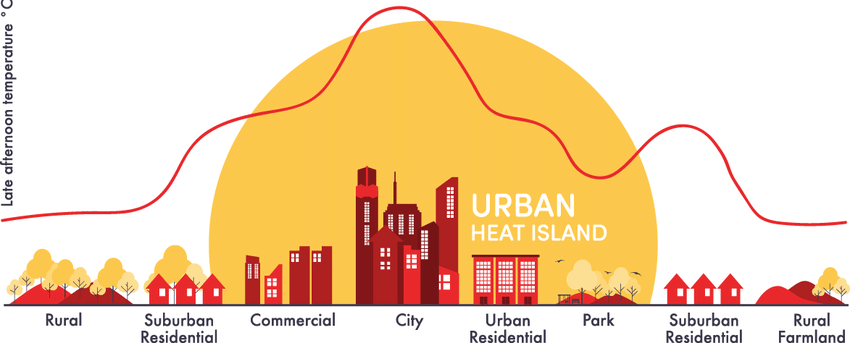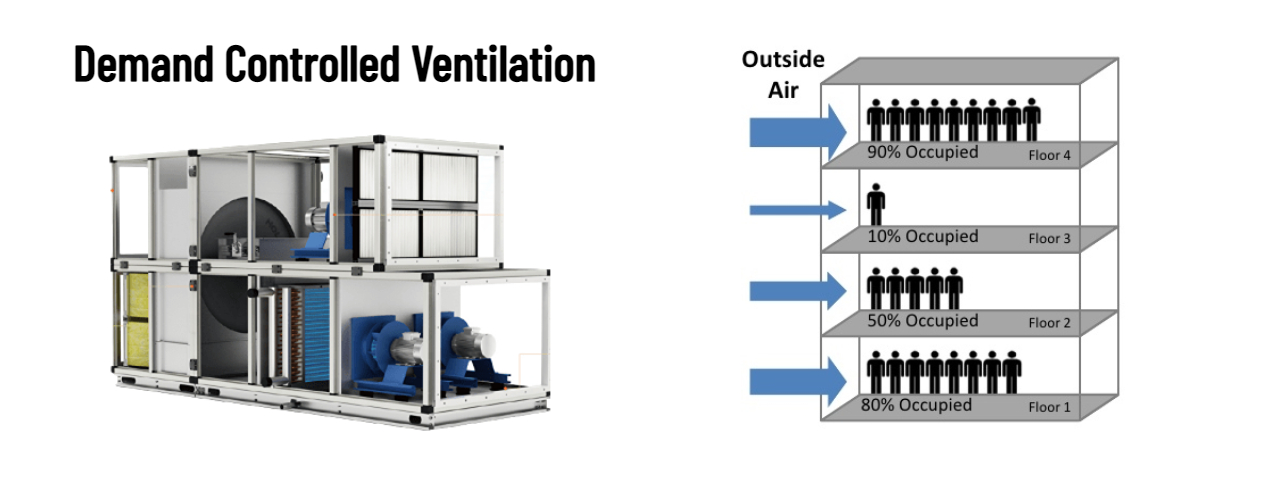How do we optimise HVAC systems to respond to real life use, save energy and provide a healthy and comfortable environment for building occupants?
Energy within buildings
Saving energy is one of the most important topics for many companies in the building industry. With HVAC being a considerable share of the building energy usage through its lifetime, the technology specified and used in buildings should be at the forefront of how to save energy. Products for ventilation, heating and cooling are progressively becoming more efficient, driven by legislation and development of new technologies in the components. But, while moving towards new efficient technology, it needs to be ensured that the existing technology is used in the smartest, most efficient way.
Typically HVAC systems are designed for a worst-case use of the building. Cooling systems are designed for peak summer temperatures and bright sunlight, heating systems are designed for the coldest days in the year and ventilation systems are based on maximum occupancy levels. This is great for designing resilient buildings, ready for all conditions. But, is this how they are used?
Systems designed for peak loads will very rarely be used at these design levels, if ever. The majority of their life, they will be operating at a fraction of the design load. This disparity between peak design loads and true life operating loads is very large, and as we will see, it is only becoming larger.
Two factors will cause the difference between peak design and operating points to become even more extreme.
Buildings are today used in a more flexible way, particularly office and commercial applications, since businesses and employees are offered possibilities of flexible work. An office building ventilation and cooling system designed for full occupancy in the year of 2020, will rarely see the same occupancy in 2023 and beyond.
Global warming is already having an impact on the extreme weather, and even with substantial changes to the contributing factors, more extreme weather events are expected in the future. Europe is likely to face hotter and drier summers. This in combination with the Urban Heat Island effect compounding summer temperature with high heat conditions in the areas where many offices and commercial buildings are located, as well as the consideration on how to design heat mitigation at the city and street level, will likely mean that the peak loads building systems are designed for are even further away from the daily operation of buildings.
Building designers have to integrate the new way of using buildings as well as future risks of extreme weather into current building design, whether at development or refurbishment stage.
Finding the efficiencies in the performance gap
When an HVAC system operates at part load, usually it operates more efficiently. Air handling units (AHUs) running at half fan speed will use less than a quarter of the input power. A chiller or heat pump running at part load makes the most of its heat exchanger to allow it to run at higher efficiencies. However, is this what is available with the technology we have available?
If we can control our AHUs to only provide the amount of air we need for the occupants inside the building, by using demand controlled ventilation (DCV), the cooling and heating coils which are sized for full capacity can control the temperature of the fresh air using much less energy.
The coils within fan-coils or chilled beams which serve the indoor spaces do not need to perform at full load either since these units are usually selected for full occupancy and at peak summer or winter conditions.
We then have a decision to make regarding these coils that don’t need full capacity. The traditional path would be to reduce the flow of cooling or heating liquid using a valve. This is a simple way to control locally and is standard with almost all systems. But, if we have slightly more intelligence in the connection between the chiller/heat pump and the coil we can, in addition, optimise the temperature of the liquid serving the coil. A cooling coil designed to use 6 degrees Celsius water, at 100% capacity, does not need that temperature at 50% capacity.
The reason to change the water temperature to the coils is to increase efficiency of the chiller/heat pump. Increasing the temperature of the water flowing from a chiller by one degree makes it about 3% more efficient. Operating a heat pump one degree cooler, increases its efficiency by similar amounts.
So, when we analyse the demand from the coils that control the comfort in the rooms, whether in the AHU or in the space, they can be operated at an optimised water temperature for the vast majority of the time. In fact, recent calculations of AHUs connected to heat pumps show that water temperatures can be optimised for over 95% of the operation time, saving over 20% of cooling energy and over 30% of heating energy. This by simply controlling the system more intelligently.
This type of capacity control still provides great room comfort as well as energy benefits, reducing temperature swings and draughts in the room, when properly controlled.
Passive and free-cooling
If we have free-cooling available in the chiller, optimising water temperatures has an even larger effect on efficiencies. Free-cooling is where the cooling water circuit is cooled directly by the outside air rather than by using the DX cooling circuit of the chiller. Typically some free-cooling is available when the ambient air temperature is one degree Celsius below the return water temperature. The amount of free-cooling increases the greater the difference is between the ambient and the water temperature, until the chiller can provide all the required cooling using its free-cooling function. Every degree we increase the cooling water temperature, the number of hours that we can get free-cooling increases considerably, saving huge amounts of energy.
We can also use the natural cooling available from the ground when using a ground source heat pump/chiller. Ground source systems gather low grade heat in the earth using a loop of piped fluid and multiply it using a heat pump to produce effective and efficient heating for our spaces. Many heat pumps can also operate in cooling mode, providing efficient cooling by rejecting heat into the ground through the ground fluid loop. This type of system is perfect for passive cooling in a part load situation, bypassing the heat pump and cooling the system directly using the lower temperature of the ground is an extremely efficient way of cooling. Just like with free-cooling, optimising the water temperatures in part load operation allows the system to be in passive cooling for the maximum amount of time, saving the most energy.
Control and intelligence
To accomplish this, we need to have a system control which can recognise the load required at the coil(s) and use this information to optimise the chiller/heat pump temperatures accordingly. Intelligence built into the chillers, heat pumps, air handling units and room units is required. An understanding of the limits of the separate products is essential along with their working limits and the knowledge of when not to optimise. More than this, a higher level system control needs to communicate effectively between all these system parts. Other than that, the energy savings are achieved by using the normal system parts, not investing in more efficient equipment in particular, but controlling what we have in a more intelligent way.
Whether the systems we are working with are existing installed system in a refurb project or a new development using cutting edge efficient new products, the principles of saving further energy in part load operation still apply as an effective and sustainable way of reducing operating costs.
















